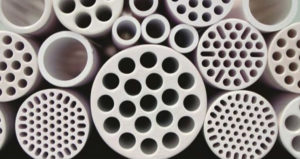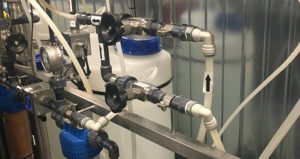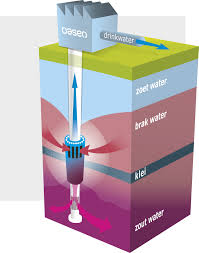Green hydrogen set for boom era in Europe

-
 Fergal MacErlean
Fergal MacErlean
Share article:
Europe’s hydrogen sector has been buoyed by a move by Members of the European Parliament (MEPs) on 14 September to raise the share of renewables in the EU’s final energy consumption to 45% by 2030 and a more ambitious quota for renewable fuels of non-biological origin such as hydrogen.
Under the EU’s Hydrogen Strategy goal the bloc had already committed to strive to increase clean hydrogen production to 10 million tons by 2030, and import 10 million tons of our lightest element. The new binding targets are for renewable fuels of non-biological origin to make up at least 5.7% of all fuels by 2030. And for a massive 50% of industry to transition to green hydrogen by 2030, with 70% by 2035.
Key role for water
As the production of one kilogram of hydrogen requires 8.92 litres of water it is clear that this essential commodity will play a key role in the expanding industry. Clean, or green, hydrogen is mainly produced by splitting highly purified water by electrolysis using electricity generated from renewable energy sources. According to the association Hydrogen Europe, the only by-product of hydrogen when used in a fuel cell is the pure water that was originally used in its production.
Sea water and wastewater
The good news is that water needed for large-scale electrolysis, can be provided by any water resource (sea water, wastewater, etc.) once demineralised via reverse osmosis plants. For example, Portugal’s National Hydrogen Strategy plans to produce relatively large amounts of hydrogen, with a planned 2-2.5 GW of electrolyser capacity by 2030, using cheap wastewater.
Transport and industry
Over the next few decades hydrogen is expected to play an increasing role in powering the transport sector. Danish company Everfuel is working to develop a European-wide offering of hydrogen supply and fuelling solutions for heavy duty vehicles and industrial stakeholders by 2030. Lea Vindvad Hansen, Everfuel communications manager told WaterNewsEurope: “Phase 1 will produce the first hydrogen late this year and is a 20 MW facility. Phase 2 is 300 MW, which will be in operation in 2025. “For the electrolyser process we can use technical water’, since we have a water purifier. There will be some extra salt in the water after production, but otherwise there are no contaminants.”
Competitive prices
Renewable hydrogen is generally more expensive than blue hydrogen, which is derived from natural gas, though prices are becoming more competitive. Advancements in the production of green hydrogen are likely to see developments in electrolysers that are capable of operating with impure water feeds such as using low-grade and saline water directly.
Desalination plants
Large scale and cost-competitive green hydrogen production is likely to boom in solar rich areas which are generally water scarce. It has been argued that this dilemma can be solved with relatively little cost by adding desalination plants at the electrolyser site to minimise water stress. The total cost for water desalination is around 0.8 euros/m3, which then adds 0.007 euros/kg to the production cost of hydrogen.
Hydrogen Europe says water desalination plants for electrolysis could be planned to produce water not just for the production of hydrogen, but also for local use as a fresh water resource for human consumption and irrigation.















